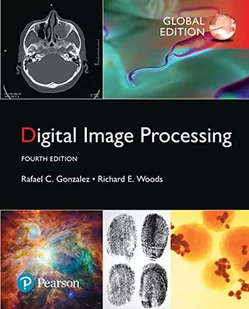Oferty
(2)Pozostałe oferty od najtańszej
Opis i specyfikacja
Wydanie 4 jest oparte na obszernej ankiecie przeprowadzonej wśród wykładowców, studentów i niezależnych czytelników w 5 instytucjach z 3 krajów. Ich opinie doprowadziły do rozszerzenia lub stworzenia nowych tematów, takich jak deep learning i deep neural networks, w tym sieci neuronowe convolutional, przekształcenie cech skali (SIFT), maimally-stable etremal regions (MSERs). Istotne poprawki wprowadzono w reorganizacji materiału dotyczącego przekształceń obrazów w bardziej spójną prezentację oraz w dyskusji na temat jąder przestrzennych i filtrowania przestrzennego.
For courses in Image Processing and Computer Vision.
For years, Image Processing has been the foundational text for the study of digital image processing. The book is suited for students at the college senior and first-year graduate level with prior background in mathematical analysis, vectors, matrices, probability, statistics, linear systems, and computer programming. As in all earlier editions, the focus of this edition of the book is on fundamentals.
The 4th Edition is based on an extensive survey of faculty, students, and independent readers in 5 institutions from 3 countries. Their feedback led to epanded or new coverage of topics such as deep learning and deep neural networks, including convolutional neural nets, the scale-invariant feature transform (SIFT), maimally-stable etremal regions (MSERs), graph cuts, k-means clustering and superpiels, active contours (snakes and level sets), and eact histogram matching. Major improvements were made in reorganising the material on image transforms into a more cohesive presentation, and in the discussion of spatial kernels and spatial filtering.
Produkty polecane dla Ciebie
